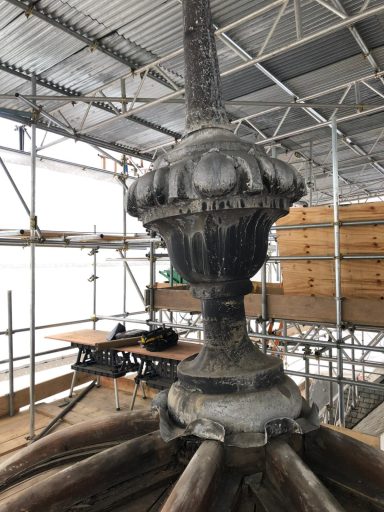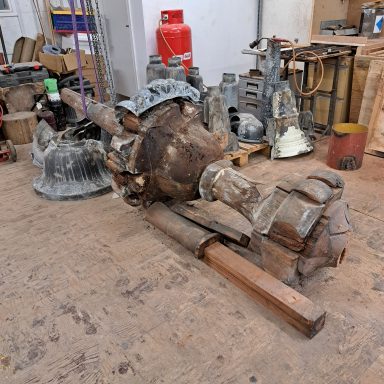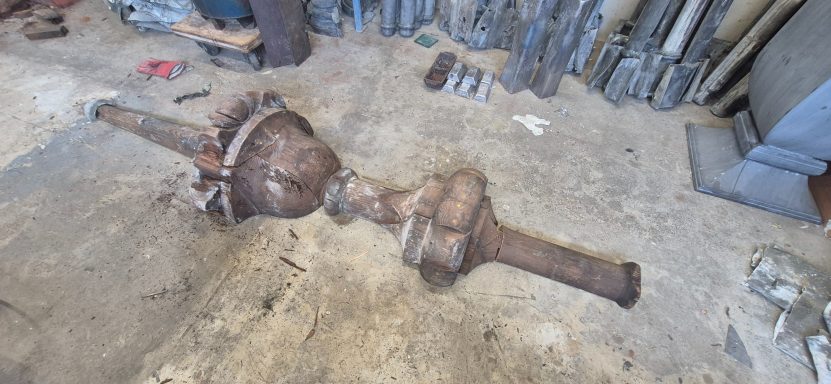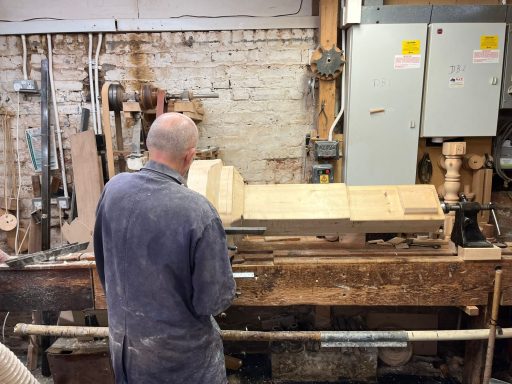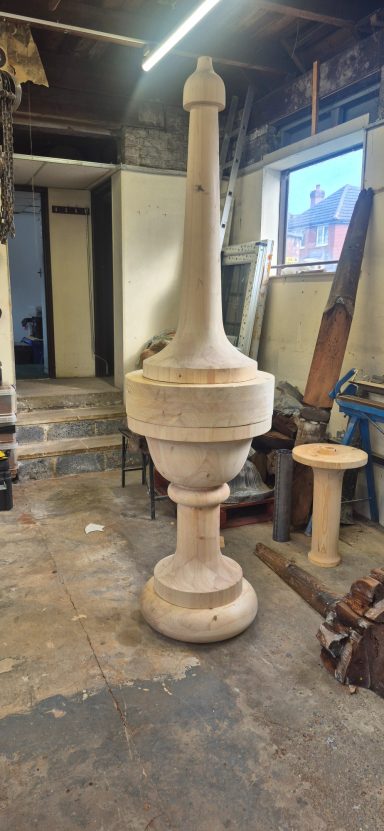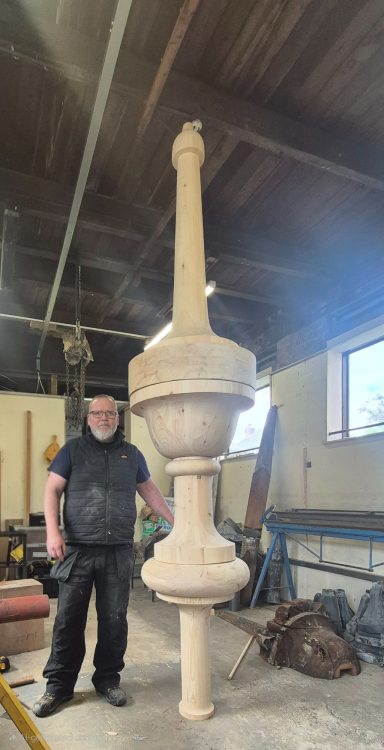LONDON SCHOOL OF ECONOMICS
KING'S CHAMBERS ROOF FINIAL - LONDON
Assessment of the original roof finial
Prior to initiating the project, a comprehensive inspection of the existing roof finial was undertaken to assess its current condition. The finial, originally installed in the early 1900s, had been subject to numerous repairs to the leadwork over the decades. A significant number of these interventions were executed to a substandard level, which consequently permitted water ingress into the underlying timber structure.
Subsequent investigations revealed the full extent of deterioration, with more than 50% of the original timberwork deemed beyond repair. In light of this assessment, it was concluded that a complete replacement of the original finial represented the most appropriate course of action.
Timber Reconstruction and Craftsmanship
Using the original finial as a reference point, reconstruction of the entire timber structure commenced. Following the meticulous fabrication of the supporting timber blocking, the artisan woodturners undertook the significant task of expertly crafting the new structure.
Standing at an imposing height of three metres, with a maximum diameter of 700 millimeters, the finial was constructed in segmented sections.
Leadwork Application and Ornamental Detailing
Following the completion of the timber structure, the next phase involved the application of the lead. Highly skilled craftsmen meticulously bossed the lead to match the contours of the timber framework, a process executed in segments to accommodate thermal expansion and contraction.
The decorative ring encircling the midsection of the finial was recreated using traditional bossing techniques. Patterns were derived from remnants of the original carved timber elements, with only one segment having survived in its entirety. These faithful reproductions ensured the continuity of the finial’s historical character while upholding the integrity of its craftsmanship.
Installation and Completion
With both the timber structure and lead cladding completed, the final phase of the project entailed the installation of the newly constructed finial atop the cupola roof. The segmented finial components, collectively weighing 320 kilograms, were delivered to site and carefully hoisted to roof level.
Following preparation of the existing lead roof to accommodate the structure, installation commenced. The base section was positioned and securely fixed from within, followed by the mid-section and uppermost component.
This marked the successful reinstatement of a distinguished architectural feature—restoring a prominent and historically significant element of London’s skyline to its former splendour.
